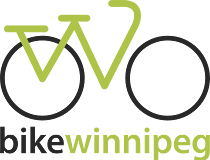Website: votegarylenko.com
Email: garylenko@gmail.com
Facebook: facebook.com/gary.lenko
Twitter: N/A
No specific statements or platform concerning cycling and active transportation appear on the candidate’s website (accessed 2 Oct 2018).
From Vote Winnipeg 2018 (Winnipeg Free Press) accessed 2 Oct 2018:
Q: “What should Winnipeg’s plan be for the future of public and active transit?”
A: Right now we need to implement better overall route scheduling, new feeder routes, more buses, a frequent service network, free passes for all students, seniors, persons with disabilities and low income earners upon application. Fund and maintain our core-transit service and implement measures to ensure safety for drivers and passengers. Secure adequate operating and capital funding from the province and apply for other federal transportation infrastructure programs. In future, I believe a combination of light rail and electric bus service routes (feeders & frequent network/rapid routes), with regular reviews and upgrades as needed along the way. Active transportation appears well funded, much has been done and council is being asked to approve funding for the Pedestrian and Cycling Program of $5.4 million in 2018 (+2.5M), $5.4 million in 2019 and $5.4 million in 2020. I believe that the city needs a green-space master plan which can incorporate the active (walking & cycling) routes, we have to consider our inclement weather that does not reasonably or safely allow most people to bike in the winter months. There are many parks that can be used for winter activities. The city has trouble snow clearing roads & sidewalks, I’m concerned that a plan to clear active transportation walkways and separated bike lanes will have to be formulated at a substantial cost or if not cleared, simply closed for the winter, much like the river walk in the spring due to flooding. The city needs to rethink our priorities our roads must be fixed and better maintained. Numerous studies confirm that the number one cause of road fatalities and serious injuries are poorly maintained roads and bridges, including engineering design flaws, so fixing and maintaining our roads is priority one.
Q: What is your position on reopening Portage and Main to pedestrians?”
A: ” I believe it should remain closed to pedestrians for safety reasons, particularly during winter months, the traffic gridlock and the cost. The rush hour gridlock will force us to spend $5.5 million more to bolster Winnipeg Transit’s fleet to accommodate rush-hour delays. The consultants hired by the city to plan the design say that keeping it closed “conflicts with the walkable neighbourhoods where we crave to live and the areas we seek out as tourists, Portage and Main should be a similar haven”. A university professor said, in part, “there would likely be barrier changes, a redeveloped median and a concerted effort to make Portage and Main a place where people want to linger”. I am quite certain that people should not be encouraged to linger in or around a busy intersection and as a Winnipegger I know that if there is an accident , a stalled vehicle or other problem at Portage and Main it impacts our entire city’s commute. Just view pedestrian traffic crossing Broadway and Main or Hargrave and Portage to imagine the delays at Portage and Main . The Forks is the place to gather and linger, not a major intersection , unless it id for an impromptu public celebration or public demonstration.”
The candidate completed the 2018 all-candidate environmental survey: A coalition of Winnipeg Environmental Organizations compiled questions for an all-candidate (Mayoral and Councilor) survey with questions relating to the environment, including AT.
